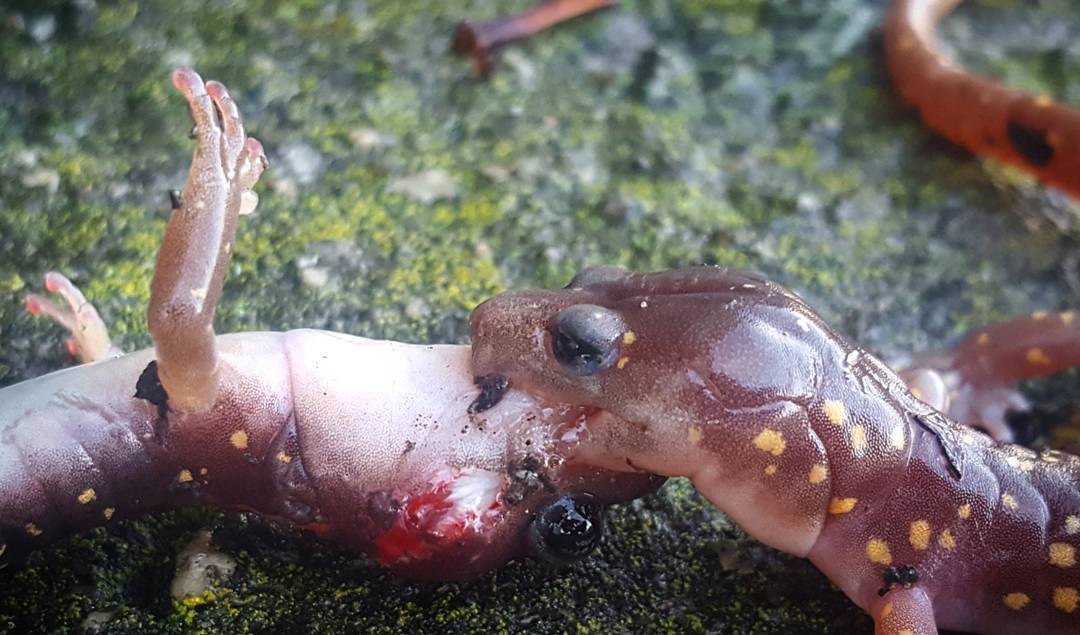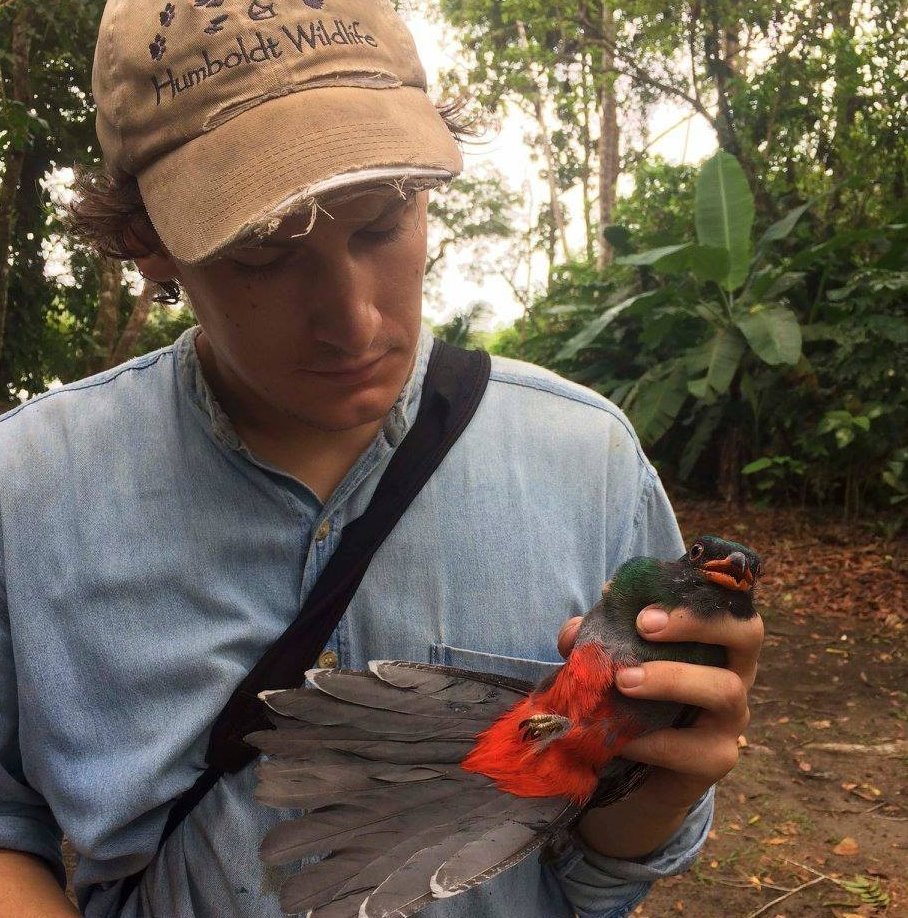Observation of the Week, 12/10/17

Our Observation of the Week is this pair of dueling arboreal salamanders, seen in California by plainsashchalaca!
“My little sister actually discovered the salamander fight,” says Sasha Robinson (@plainsashchalaca). “She came back in the house to tell me that ‘two of those speckly salamanders’ were on the porch eating each other and I ran outside to check it out.”
Just like his sister, Sasha himself was into nature when he was a child. “Some of my first and most vivid memories are of camping near Yosemite with my family,” he recalls “When I was around 10 years old, I got a pair of binoculars and started putting names to the birds I saw flitting around my backyard. I think birding kind of showed me how much fun using a field guide was and I was soon buying plant guides, herp guides, and more!”
Sasha obtained a degree in Wildlife Conservation and Management at California’s Humboldt State University, where he herped, tidepooled, and mushroomed. “While my main focus remained on the flying dinosaurs that had kindled my passion, I continued to develop a healthy appreciation for all the things I found ‘along the way’.”
But back to the salamanders.
“I have know idea how long these two apparently male arboreal salamanders had been fighting, but it had been raining all night which must have bumped up the ‘mander activity,” says Sasha. He continued to check-in on them as the morning went on, “only to find them still at it and slowly dragging each other into the bushes where I lost them. Both were still living when I last observed them although one had a nasty gash on his head.”

Members of the Plethodontidae, or lungless salamander family, arboreal salamanders are a common sighting along the western coast of North America and are even found (natively) on the tiny Farallon Islands off of San Francisco. They’re known to sometimes inflict painful bites on humans with their large jaw muscles and teeth and according to California Herps, “Both males and females are agressively [sic] territorial. Individuals covered with scars (probably from fighting) are often found, and captives kept together often bite the other salamander's tail.”
Currently, Sasha has “taken up the ‘bird-bumming’ lifestyle (as a traveling avian field technician), gaining ever more field experience while honing in on where I want to focus my career.” He’s studied declining grassland songbirds for the Bird Conservancy of the Rockies and banded birds in the Cordillera de Talamanca highlands for Costa Rica Bird Observatories (where he was in the photo below, banding a slaty-tailed trogon).

He uses iNaturalist “to explore my interests in other taxa, most frequently: lepidopterans, plants, fungi, herps, and nudibranchs.
For example, I brought a moth light during a recent 5 month stint spent working in Costa Rica. I took hundreds of photos of moths, most of which I could only tentatively ID to family. When I got back to the states I started mass-uploading them to iNat and nearly all of them have now been identified by others! Incredible! Thanks iNaturalist!
- by Tony Iwane
- No arboreal salamander fights on YouTube, but these fire salamanders in Belgium certainly go at each other with some intensity.
- True to their common name, arboreal salamanders do climb up trees, using their feet and prehensile tail. Check out the curled tail in this observation.





Comentários
Adicionar um Comentário